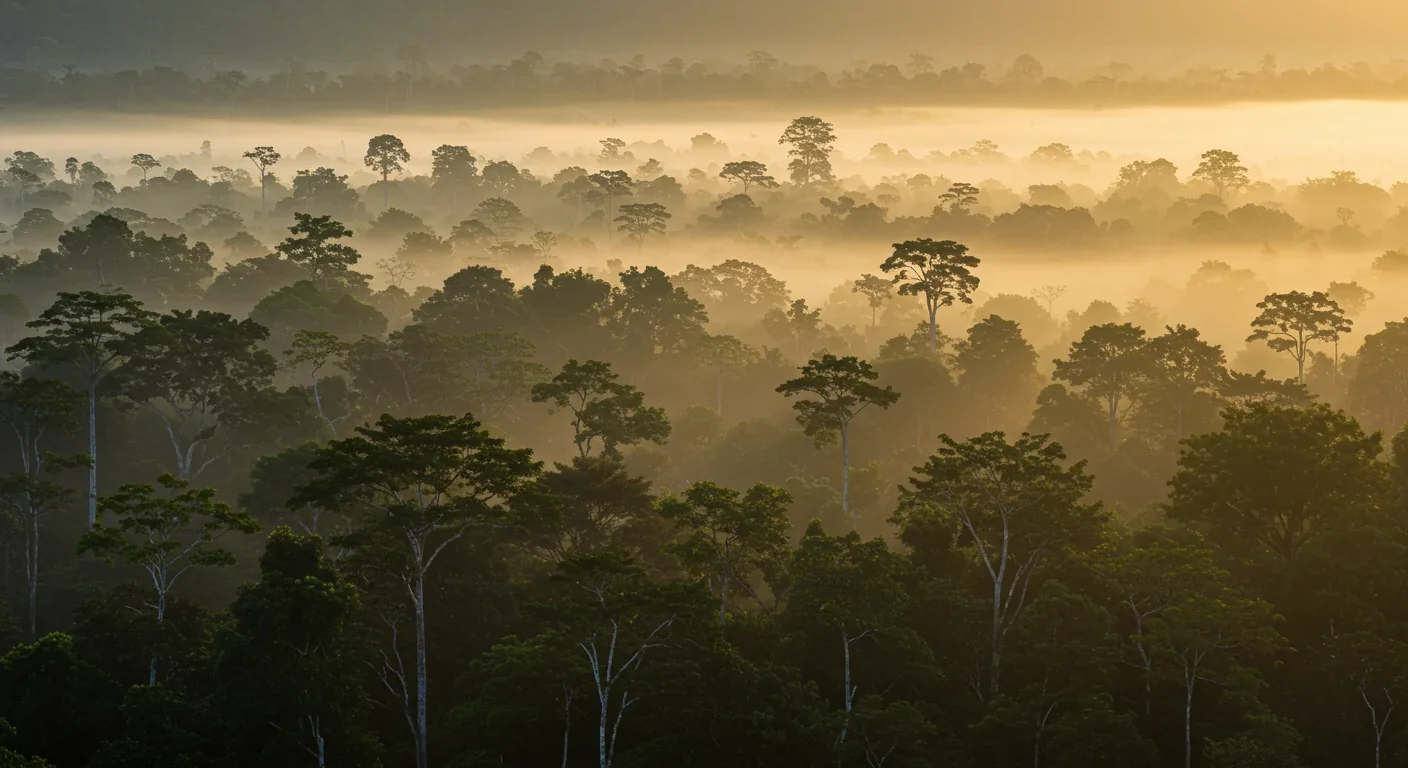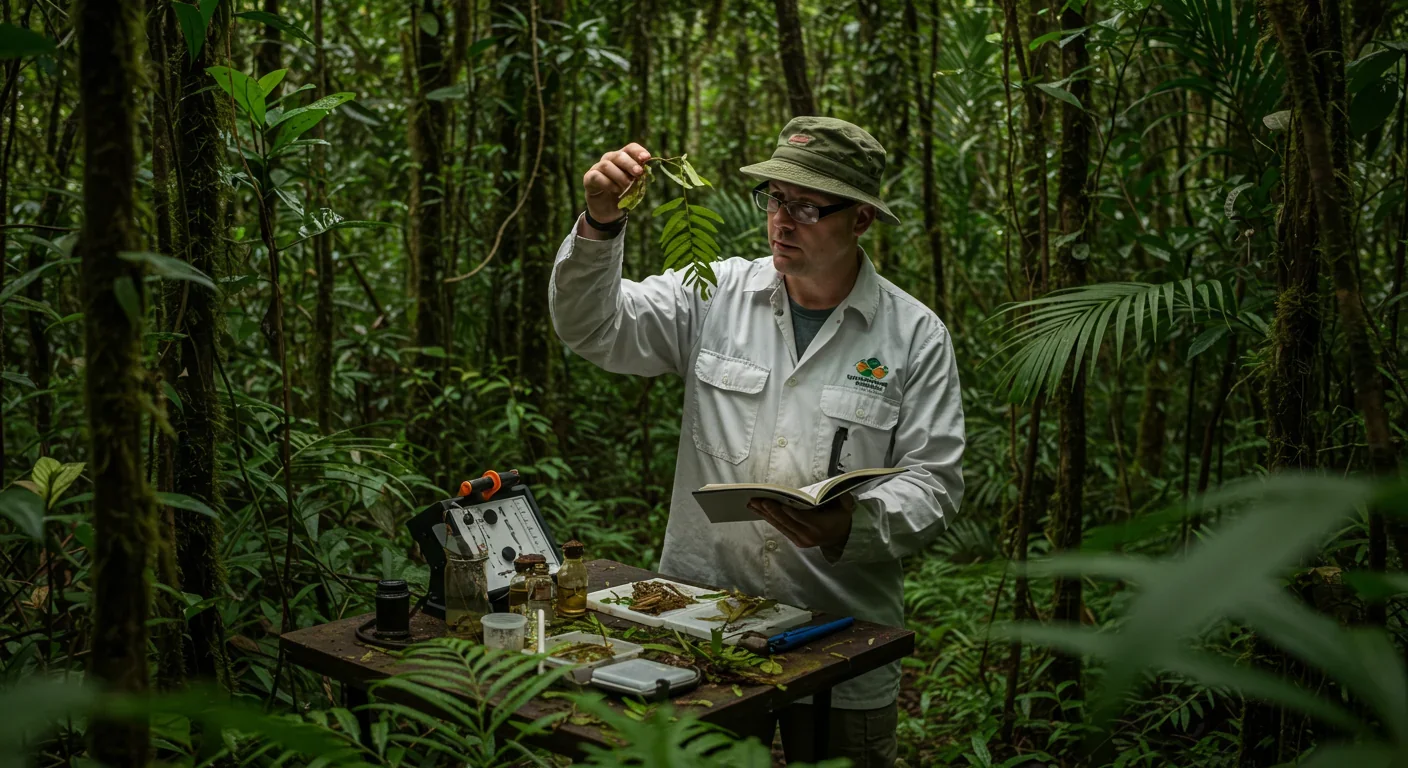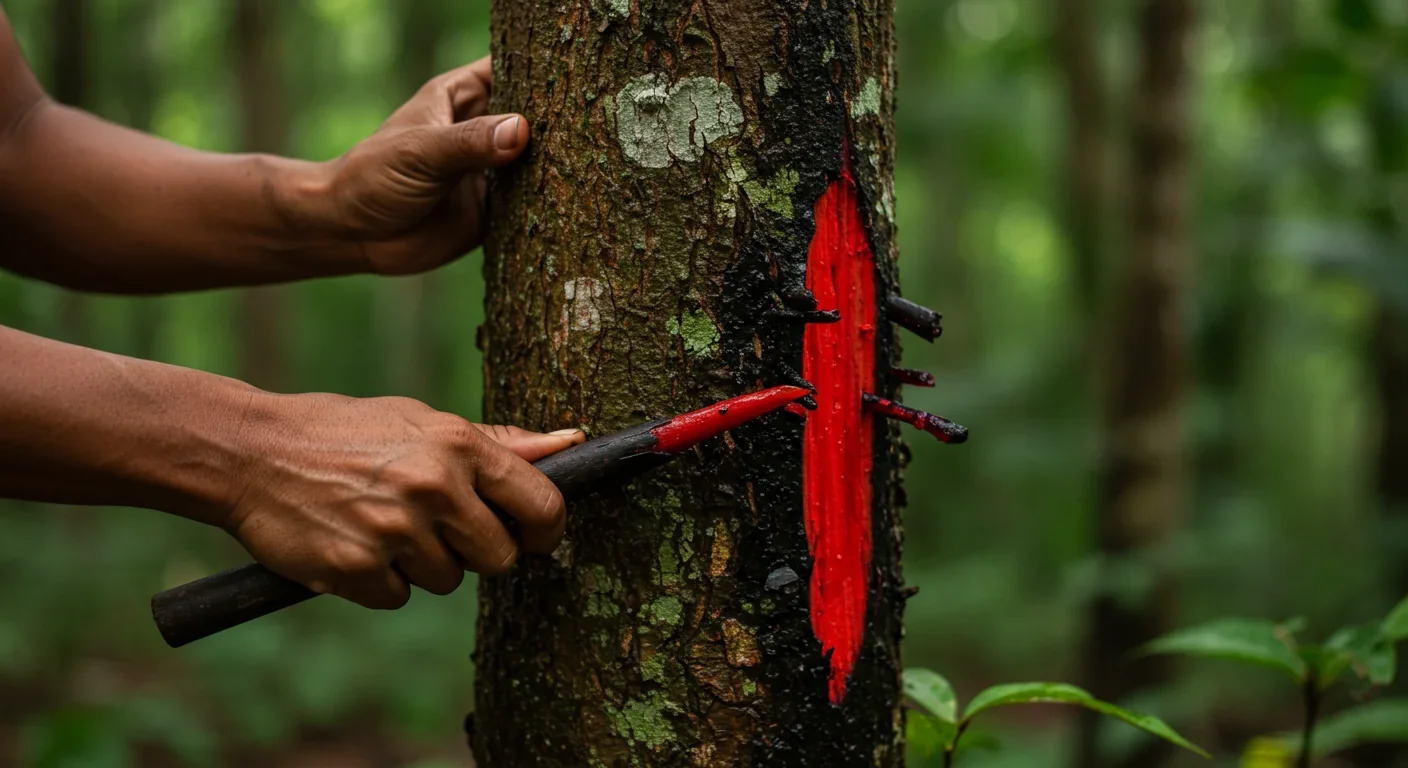Epigenetic Clocks Predict Disease 30 Years Early

TL;DR: Rainforests hold undiscovered medicines that could revolutionize healthcare, but deforestation threatens species extinction before their therapeutic potential is realized. Success requires balancing pharmaceutical innovation with conservation, indigenous rights, and equitable benefit-sharing under evolving legal frameworks.

Within the next decade, you'll likely take a medication derived from a plant growing somewhere in the Amazon right now. You just don't know which one yet, and neither do scientists. That's the thrilling, urgent reality of rainforest bioprospecting—a race between discovery and extinction playing out beneath the world's densest canopies.
Every time a bulldozer clears another hectare, we lose species that haven't been catalogued, let alone tested for their therapeutic potential. But here's the twist: even as deforestation accelerates, new technologies are revolutionizing how we find and develop these hidden medicines, creating both hope and ethical complexity.
Rainforests aren't just pretty landscapes. They're biochemical factories running experiments that took millions of years to perfect. Plants and animals there evolved chemical defenses against predators, pathogens, and competitors, creating compounds with remarkable therapeutic properties.
Consider crofelemer, extracted from the red bark sap of the Amazonian Croton lechleri tree. Indigenous communities called it "dragon's blood" long before pharmaceutical researchers discovered it could treat severe diarrhea. The FDA has now authorized its use in expanded access programs for pediatric patients with life-threatening intestinal conditions, reducing their need for intravenous nutrition by up to 27%.
That success story took decades and represents just one compound from one tree species. Rainforests contain millions of species, most never scientifically screened. The gap between what we know and what's out there is staggering.
The last five years have delivered concrete proof that rainforests still hold transformative medicines. Researchers have identified a novel scorpine-like peptide from Amazonian scorpions with potential antimicrobial properties, expanding the hunt beyond plants into the animal kingdom.
But translating promising compounds into approved drugs remains brutally difficult. Mytesi, another rainforest-derived medication, recently failed to meet its primary endpoint in a breast cancer trial, though it showed meaningful benefits in specific patient subgroups. The setback illustrates why pharmaceutical companies often hesitate to invest in natural product research—the path from jungle to pharmacy shelf is expensive, uncertain, and slow.
Yet the statistics tell a compelling story. Natural products show a phase-I success rate around 35% and phase-III success rate around 45%, outperforming many synthetic compounds. Evolution, it turns out, is better at drug design than we are.
How do researchers actually find these compounds? The process blends traditional knowledge with cutting-edge technology. Indigenous communities have used rainforest plants medicinally for centuries, offering crucial starting points. Scientists then isolate active compounds, test them in laboratories, and modify structures to enhance effectiveness while reducing side effects.
Modern approaches are accelerating this timeline. Computational methods can now screen thousands of compounds virtually, predicting which molecules might bind to disease targets. Genomic sequencing reveals biosynthetic pathways, allowing researchers to understand how organisms produce complex chemicals. Some teams are even using machine learning to identify patterns in successful natural drugs, guiding their search for new candidates.
Still, there's no shortcut around basic fieldwork. Someone has to go into the rainforest, collect samples, document traditional uses, and begin the painstaking laboratory work. And that's where conservation and ethics collide head-on with commercial interests.
Here's an uncomfortable truth: a standing rainforest has less immediate economic value than the same land cleared for agriculture. That calculus drives deforestation across the tropics, erasing species faster than we can study them. Biodiversity loss is accelerating, with rare plants increasingly targeted by illegal traders meeting global demand.
The pharmaceutical argument for conservation is straightforward—protect rainforests because they might contain the next wonder drug. It's pragmatic, but flawed. This framing reduces complex ecosystems to potential profit centers, ignoring intrinsic ecological value. Yet in political and economic contexts where conservation struggles for funding, the pharmaceutical angle carries weight.

Some economists have attempted to quantify the monetary value of undiscovered medicines. These estimates vary wildly and ultimately miss the point—you can't price what you haven't found. The real question is whether we're willing to gamble that the next breakthrough isn't in the hectare being cleared tomorrow.
Successful sustainable harvesting programs offer one path forward. Napo Pharmaceuticals established fair-trade practices for crofelemer harvesting, supporting indigenous communities while maintaining ecological integrity. It's a model that works when companies commit to it—protecting biodiversity while delivering therapeutic value and economic benefits to local populations.
This brings us to bioprospecting's thorniest issue: who benefits when a traditional remedy becomes a billion-dollar drug? The history is ugly. Pharmaceutical companies have extracted knowledge from indigenous communities, patented resulting compounds, and returned little or nothing to the original knowledge holders. The term "biopiracy" exists because it happened repeatedly.
International law has evolved to address these injustices. The Nagoya Protocol, adopted in 2014, established global standards for Access and Benefit Sharing (ABS). Countries have sovereign rights over their genetic resources, and anyone wanting to use those resources must negotiate benefit-sharing agreements with relevant stakeholders, including indigenous communities.
The protocol created the Access and Benefit-Sharing Clearing-House, an online platform tracking national ABS measures and certificates of compliance. In theory, it prevents exploitation. In practice, enforcement remains inconsistent, and power imbalances between multinational corporations and local communities persist.
South Africa offers an instructive case study. When appetite-suppressant research on the Hoodia plant threatened to exclude San communities, benefit-sharing agreements were eventually established, providing royalties and infrastructure support. The country now requires ABS agreements and permits before research, publication, or commercialization of indigenous biological resources. Companies that skip this process risk legal penalties and lost partnerships.
The National Indigenous Knowledge Systems Office (NIKSO) provides a formal, community-driven licensing system balancing cultural preservation with commercial value. It's a framework that could inform rainforest bioprospecting, though adapting it to regions with less developed legal infrastructure presents challenges.
Just when legal frameworks seemed to be catching up, technology created new complications. Digital Sequence Information (DSI)—genetic sequence data stored in databases—presents a significant challenge to traditional ABS frameworks.
Here's the issue: researchers can now access genetic information without ever visiting the country where an organism lives. They download sequence data, use it to develop products, and potentially bypass benefit-sharing obligations entirely. Does DSI fall under the Nagoya Protocol? The question remains hotly debated, creating a regulatory gray area that could undermine the entire ABS system.
Synthetic biology adds another layer of complexity. If scientists use digital sequences to synthesize compounds in laboratories, never touching the original organisms, do source countries and communities deserve compensation? How do we trace digital information's origins when sequences are mixed, modified, and shared globally?
These aren't theoretical concerns. The pace of technological innovation is outstripping legal frameworks designed for physical sample collection. Without updates, we risk creating a system where digital access enables a new form of biopiracy.
Countries with significant rainforest cover have adopted varying strategies. Brazil, home to the Amazon, has historically imposed strict regulations on bioprospecting, requiring extensive permits and benefit-sharing agreements. Some argue this protects sovereignty and indigenous rights; others contend it has stifled legitimate research and driven work elsewhere.
Indonesia and Malaysia have pursued more business-friendly approaches, partnering with pharmaceutical companies and universities to catalog biodiversity and develop commercial products. Critics worry these arrangements favor foreign corporations over local communities.

Meanwhile, rainforest nations with limited resources struggle to enforce any regulations. Illegal collection of biological samples continues, with materials smuggled across borders to countries with less restrictive research environments.
International cooperation remains frustratingly slow. While the Nagoya Protocol provides a framework, each country implements it differently, creating a patchwork of regulations researchers must navigate. Harmonizing these approaches while respecting national sovereignty is an ongoing challenge.
Artificial intelligence and genomics are revolutionizing natural drug discovery, but they're also concentrating power in institutions with advanced technological capabilities. The gap between wealthy research centers and biodiversity-rich but economically disadvantaged regions is widening.
Some initiatives are trying to bridge this divide. Collaborative research programs train scientists in rainforest countries, building local capacity for bioprospecting. Open-access databases make genetic information available to researchers worldwide, though this creates its own equity questions about DSI.
Cloud-based AI tools could democratize compound screening, allowing researchers anywhere to analyze promising molecules. But without equitable access to these technologies and their outputs, they risk becoming another mechanism for extracting value from biodiverse regions while leaving communities behind.
The future of rainforest medicine depends on choices being made now. Will we protect enough forest for discovery to continue? Can legal frameworks evolve to address digital and synthetic biology challenges? Will benefit-sharing agreements actually deliver meaningful value to indigenous communities?
There are reasons for cautious optimism. More pharmaceutical companies are adopting sustainable harvesting and fair-trade principles, recognizing that long-term success requires protecting source ecosystems and supporting local populations. Conservation organizations increasingly emphasize pharmaceutical value in their advocacy, though they're careful not to reduce biodiversity to potential pill bottles.
Technology offers powerful tools, but only if deployed equitably. The same AI that screens compounds could help enforce benefit-sharing agreements and track biological material flows. Blockchain technology might create transparent, tamper-proof records of genetic resource access and use.
For readers wondering what role they can play, the answer is complex. Supporting conservation organizations helps, but so does demanding transparency from pharmaceutical companies about their sourcing practices. Policymakers need pressure to strengthen ABS frameworks and address DSI challenges. Scientists must insist on ethical research practices even when regulations are weak.
The medicines waiting in rainforests could treat diseases we're currently helpless against. But discovering them requires keeping ecosystems intact, respecting the communities who've stewarded them for generations, and building systems that share benefits equitably. We're in a race against time, bulldozers, and our own worst instincts. The pharmacy of the future is out there. Whether we find it depends on the choices we make today.

Recent breakthroughs in fusion technology—including 351,000-gauss magnetic fields, AI-driven plasma diagnostics, and net energy gain at the National Ignition Facility—are transforming fusion propulsion from science fiction to engineering frontier. Scientists now have a realistic pathway to accelerate spacecraft to 10% of light speed, enabling a 43-year journey to Alpha Centauri. While challenges remain in miniaturization, neutron management, and sustained operation, the physics barriers have ...

Epigenetic clocks measure DNA methylation patterns to calculate biological age, which predicts disease risk up to 30 years before symptoms appear. Landmark studies show that accelerated epigenetic aging forecasts cardiovascular disease, diabetes, and neurodegeneration with remarkable accuracy. Lifestyle interventions—Mediterranean diet, structured exercise, quality sleep, stress management—can measurably reverse biological aging, reducing epigenetic age by 1-2 years within months. Commercial ...

Data centers consumed 415 terawatt-hours of electricity in 2024 and will nearly double that by 2030, driven by AI's insatiable energy appetite. Despite tech giants' renewable pledges, actual emissions are up to 662% higher than reported due to accounting loopholes. A digital pollution tax—similar to Europe's carbon border tariff—could finally force the industry to invest in efficiency technologies like liquid cooling, waste heat recovery, and time-matched renewable power, transforming volunta...

Humans are hardwired to see invisible agents—gods, ghosts, conspiracies—thanks to the Hyperactive Agency Detection Device (HADD), an evolutionary survival mechanism that favored false alarms over fatal misses. This cognitive bias, rooted in brain regions like the temporoparietal junction and medial prefrontal cortex, generates religious beliefs, animistic worldviews, and conspiracy theories across all cultures. Understanding HADD doesn't eliminate belief, but it helps us recognize when our pa...

The bombardier beetle has perfected a chemical defense system that human engineers are still trying to replicate: a two-chamber micro-combustion engine that mixes hydroquinone and hydrogen peroxide to create explosive 100°C sprays at up to 500 pulses per second, aimed with 270-degree precision. This tiny insect's biochemical marvel is inspiring revolutionary technologies in aerospace propulsion, pharmaceutical delivery, and fire suppression. By 2030, beetle-inspired systems could position sat...

The U.S. faces a catastrophic care worker shortage driven by poverty-level wages, overwhelming burnout, and systemic undervaluation. With 99% of nursing homes hiring and 9.7 million openings projected by 2034, the crisis threatens patient safety, family stability, and economic productivity. Evidence-based solutions—wage reforms, streamlined training, technology integration, and policy enforcement—exist and work, but require sustained political will and cultural recognition that caregiving is ...

Every major AI model was trained on copyrighted text scraped without permission, triggering billion-dollar lawsuits and forcing a reckoning between innovation and creator rights. The future depends on finding balance between transformative AI development and fair compensation for the people whose work fuels it.